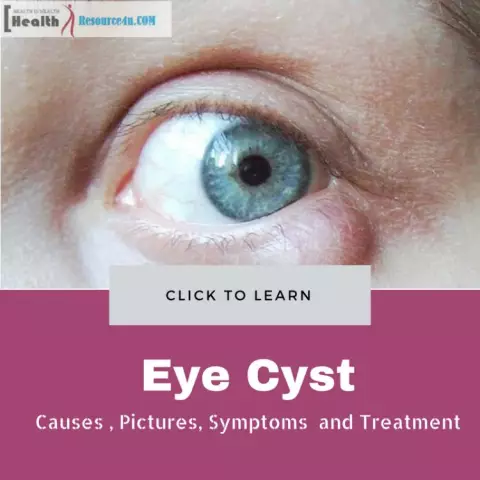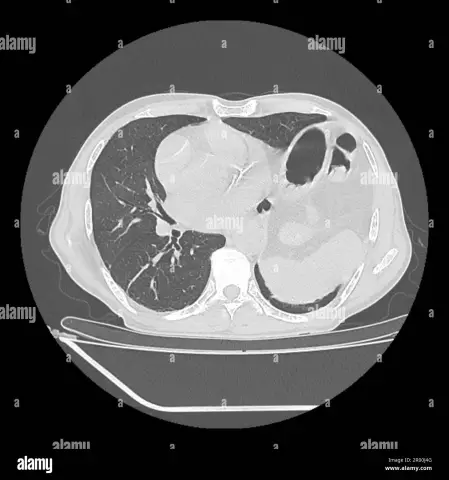- Author Rachel Wainwright [email protected].
- Public 2023-12-15 07:39.
- Last modified 2025-11-02 20:14.
Kyphosis
Brief description of the disease
Kyphosis is a curvature of the spine in the sagittal plane. To one degree or another, such curvatures are present in any person, however, when it comes to a significant deviation from the norm, the patient is diagnosed with kyphosis of the spine. The bend has the shape of the letter "C" with a posterior bulge.
The following degrees of kyphosis are distinguished:
- I degree (mild kyphosis) - the amount of curvature is more than 30 degrees;
- II degree (moderate thoracic kyphosis) - from 30 to 60 degrees;
- III degree (severe kyphosis) - curvature of more than 60 degrees.
Causes of kyphosis

There are several reasons for the formation of a curved spine. First of all, pathology can be caused by disorders of intrauterine development. In this case, we are talking about such a disease as congenital kyphosis, the treatment of which must be started immediately after the birth of the child. In some cases, the cause of kyphosis is surgery or injury, especially compression fractures of the vertebral bodies, typical for the elderly. These are the main causes of spinal curvature, but there are more exotic factors that can influence the development of adverse processes. Such factors include, for example, infectious diseases or radiation therapy, which is prescribed to a child in the presence of malignant neoplasms.
Disease symptoms
The main symptom of kyphosis is back pain caused by muscle spasms. In severe cases, some patients experience compression of the spinal cord and nerve roots. In this case, people begin to suffer from sudden, sharp pains, weakness in the limbs, pelvic disorders and numbness.
Kyphosis - treatment of the disease

Nowadays, several techniques have become widespread. In the overwhelming majority of cases, patients are prescribed conservative treatment, which includes physiotherapy, exercise therapy, massage, medication and wearing special corsets. Note that if you are diagnosed with kyphosis, exercise using special techniques becomes an absolute must. This is due to the fact that gymnastics helps to cope with pain, prevents the development of dysfunctions of the lungs and heart, often in the absence of adequate medical procedures.
The treatment of concomitant osteoporosis, which often develops with curvature of the spine, also helps to stop the development of degenerative changes. With this option, the kyphosis of the thoracic region is treated with the use of calcium preparations, vitamins, physiotherapy exercises and hormone replacement therapy.
Let's take a closer look at the aforementioned corsets. Wearing them can significantly reduce the pain syndrome, but is not able to affect the curvature of posture, if the kyphosis of the thoracic spine has already led to strong changes. It should also be noted that the uncontrolled use of corsets is harmful to the patient's health, as it leads to weakening of the back muscles and an increase in the degree of deformation.
If drug treatment does not lead to the expected results and the kyphosis of the spine continues to progress, then doctors resort to surgical intervention. Surgical treatment of kyphosis carries a certain amount of risk, therefore, before the operation, it is necessary to weigh the pros and cons, that is, the potential positive effect should outweigh the possible risk. Currently, the indications for surgery are situations when thoracic kyphosis is accompanied by:
- severe pain is the most common cause of surgery, since pain syndrome often does not respond to conservative treatment;
- progressive kyphotic deformity - this process is accompanied by compression of the nerve structures, disorders in the functioning of the lungs and heart, therefore, the patient may be recommended to operate;
- severe cosmetic defects - if the kyphosis of the thoracic spine significantly reduces the patient's quality of life or affects his professional suitability, then doctors decide on the admissibility of surgical intervention.
As for the operation itself, it consists of two stages - elimination of deformity and stabilization of the position of the spine. For the last stage, the so-called transpedicular stabilization systems are used, which consist of screws and connecting rods. They are made from neutral materials and are not rejected by the body, thus avoiding several more operations to remove the system.
YouTube video related to the article:
The information is generalized and provided for informational purposes only. At the first sign of illness, see your doctor. Self-medication is hazardous to health!






